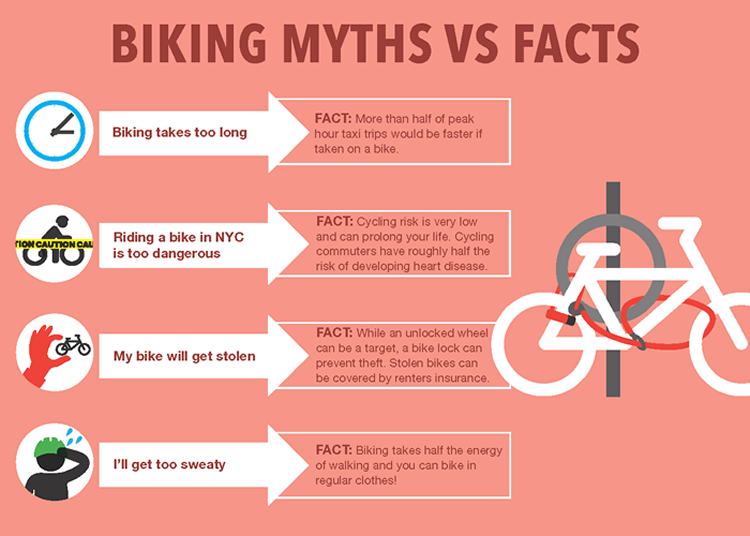Created On: 8/09/2021
Published On: 8/09/2021
As you might have guessed, there are a lot of myths in the bicycling world, and so it's very critical to learn the facts, which is imperative to figure out EARLY! Like how to shift a bicycle, which is something I'm going to cover here for the unsophisticated bicyclist. Also, I'll cover a host of other facts and myths as well, so pay close attention and consider well what is covered!
Bicycles get stolen A LOT, so much in fact that, if you don't lock your bicycle, there's 20-40% chance it will get stolen within 10 minutes or less, depending upon if there are cameras around and what side of town you are on, and I say that because in wealthier neighborhoods kids often leave their bicycles unattended or in the yard, but they also get stolen quite frequently too. It also happens a lot near poorer neighborhoods too, where wandering thieves pick up anything within reach of the sidewalk, in yards, etc., and this is why getting a lock for your bicycle is paramount!
Some bicycle locks are very easy to take off, small cable lines only take less than a minute or two, so if you want a solid lock, get a U-Lock, or at the very least a very thick cable style lock, those off far more security than a standard or smaller cable lock, and chains can be popped off in SECONDS! Of course nobody is going to carry around a thick chain (Think 1/2" think here), far too heavy, but they will carry around a thick U-Lock, but the U-Lock only protects one wheel, and it can't protect the seat!
Another important thing to learn about bicycles is shifting, too many riders don't really truly know how to properly shift a bicycle, specifically the 3 ring crankset / 7-9 Gear rear cassette setup, and learning this is imperative to multiple things, like lengthening the lifespan of your chain and increasing the speed of the bicycle. If you use 1-3rd gear with the first Crank Ring (Low Gear / Smaller Crank), that's perfect for uphill battles, and if you use 3-5th gear for the 2nd Crank Ring (Middle), that's perfect for flat level riding, and the 3rd Crank (The big one) is best used for 6-9th gear, though you can use it as low as 3rd gear for flat riding, depending upon how strong you are!
When you shift correctly, you can maintain your "Tempo" / "Rhythm" of pedaling, and how you sit can greatly increase or decrease strain to your muscles in your legs, but ultimately pedaling a smooth tempo in the proper gear will make riding a bicycle seem so very easy and effortless, which it should be! However, new cyclist tend to use only one gear, and you see the "Newb" struggling up slight inclines / hills, it's funny, and I dare say I too was once like them!
Some of the more important facts are things you learn, like tire size is critical to know before selecting an inner tube replacement, and I say this because not all facts are common sense, like finding the frame size of a bicycle by measuring from the center of the crank to the top of where the seat post goes into the frame. You'd be surprised how many people have never measured a bicycle's actual size, but bicycle facts are a long list of things people will come to learn naturally and things they will come to learn by reading or learning from other cyclist.
One fact I learned from a BMX rider is, he got tired of getting flats so bad that he uses TWO bicycle tires to prevent flats, and he still does massive tricks on his bike and rides it every day, it works! Facts can be unconventional wisdom learned, like the larger &/or thinner your tire is, the easier it gets flat, and though puncture protection does work (Pretty well), it does make the bicycle heavier usually (The cheaper puncture resistant tires that is), and may slow you down some.
I'd rather ride slower than get flats more often, how about you? It makes zero sense to head out on the trail to get 2 flats in one ride (SUXY!), so do learn about "Better tires", and that's to say chuck those crummy original manufacturing equipped tires for better tires, but do note that you should first still use the original manufacturing tires first, unless they go flat too often! It can get expensive if you have to frequently repair flat tires, so watch where you a riding, and learn how to fix inner tubes with super glue and magazine paper!
I'm sure I'll probably update this and add some more content as I think on the subject more, but that's it for now, feel free to comment if you'd like to add your own tidbits to add to the article!
Thanks for reading, I hope this blog helps you, and please share a link with others, thanks!.
If you would like to help me continue to help others, you can use Pay Pal or CashApp to send me a donation via my email at: galegtech@gmail.com
Thank You readers for your support!
Copyright © Gale Innes 2023
All Rights Reserved Worldwide

No comments:
Post a Comment